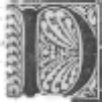Chapter II.
Dumnonia and Glaston.
 UMNONIA, therefore,as a geographical term, seems to lie in the background of our national, and especially West-
UMNONIA, therefore,as a geographical term, seems to lie in the background of our national, and especially West-
That there was a Church if not a distinct Diocese in Dumnonia, we may infer from a letterwritten by Aldhelm, Bishop of Sherborne in a d 704 who gave a kind of pastoral charge to Gerontius, King of Dumnoiiia, and to all priests (sacerdotes) living in Dumnonia. The view of Aldhelm, who was partially Romanized, was that Dumnonia was rather uncivilized (dira), a view we need not endorse, as he probably meant that the Celtic Church was not sufficiently imbued with Roman and papal influences.
The old Roman geographers used the name of Dumnonia mid had a definition for it, Claudius Ptolemaeus ad 150 placing the Dumnonii next to the Durotriges or Dorsaetas,
i.e. men of Dorset, on the east, and extending this region to" Volida" ie Fowey or Falmouth in Cornwall.
He gave them Isca Dumnoniorum (Exeter) and Caerleon.
On the Coast
28 Dumnonia
of Somerset Dumnonia included Uxella on the Axe and Uphill1 above Brean.
This certainly would include 4'Anchor Head ” on the present site of Weston-
It is worth noticing that a later
Roman geographer, Caius Julius Solinus, a .d . 238 extended
the Dumnonii much further up the Severn and placed them
opposite to the Silures.
Dr. Guest in his “ Origines Celticae,” 2 conjectures that the bounds of Dumnonia stretched from Malmesbury to the
Land’s End and that the kings of Dumnonia had added to this realm by conquest and that, in the days of Gereint,
Dumnonia must have been in power and dignity the first of
the British Kingdoms.
He writes : " It is not my object to
trace the several stages of decay through which the power of Dumnonia passed as it melted away before the ascendancy of England.
The more intimate relations of this British
Kingdom were no doubt with the kindred races of Wales and Brittany, but the influences it exercised over the national
progress and even over the literature of its English neighbours
were by no means of slight account, though they have been
strangely overlooked.
They afford, I think, the only solution of some of the most intricate problems connected with our
early history, and materials for such inquiry may be scanty,
but they are not altogether wanting.”
The three chief “ perpetual choirs ” of the Isle of Britain
were : (1) That of Llan Iltud Vawr in Glamorgan ; (2) That
of Ambrosius in Ambresbury, near Salisbury ;
(3) That of Glaston. In each of these choirs there were 2,400, that is
there were one hundred for every hour of the day and night
in rotation perpetuating the praise of God without rest or
intermission. What may be termed the spiritual life of an
enlarged Dumnonia was centred around these places about
a .d . 500. This implied a kind of national unity from Salisbury to the Land’s End. When, later on, the Bishopric of
Sherborne was formed and Aldhelm ruled over “ Selwood1. See “ George of Ravenna,” p. 424. Urbs ab Uxellae ostio longe
separata. Fluvius est Axe— Uxella forte est Axbridge : also “ History of
the Ancient Britons,” by J. A. Giles, D.C.L., vol. ii, p. 102.
2. Vol. ii, pp. 270-
Dumnonia and Glaston 2 9
shire/’ this inland continuity from Wiltshire westward was
slightly impaired about a .d . 700. But Dumnonia unity was
preserved along the north coasts and littoral of the Severn
Sea, being in its very nature maritime and its inhabitants seafaring. Glaston and Llan Iltud Vawr preserved their Celtic
traditions. It was a matter of navigation and of a sea-
forests and less perilous.
That road or highway, possibly of Roman origin, linking
Dumnonia and its northern parts together, leading from
Bristol (and Bath) westward to Uxella or Axbridge, Brent and
so to Cynwith or Comwith passage on the Parret was first
constructed with a strategic and maritime purpose. It was
the trunk road of ancient Dumnonia for all purposes. It
helped the pilgrim also on his way to Glaston and was connected with all land routes and especially with the sea routes
across Severn. Glaston also had its river anchorages, its
canals and moorland boats (batelli) and river craft. The tidal
wave swept humble currough or larger barge and vessel up to its
sacred portals.
If we adopt Sir Charles Elton’s definitions of ancient Siluria1
and infer that it meant a block of Wales including Glamorgan
and Hereford, as well as Monmouth, it will be seen that the
Dumnonii must have been found some distance up the Severn.
Hath and Bristol (Bristowa, the town of the British) ; both
with churches dedicated to St. Michael, would have been
occupied by them. Gildas, our oldest historian, who knew
the Severn well, mentions a certain “ King of Dumnonia ”
Constantine by name (Dumnoniae tyrannus), as apart from
Vortipore, King of Demetia which we assume to mean geographically, South Wales and not simply Pembroke. The
name of Constantine, it may be noted, introduces early
Christian association (300-
parish near Falmouth called Constantine where it is said
a lthough the rumour cannot be substantiated) silver coins
of Arthur were found near the church.2 Constantine, also,
1 Elton’s “ Origins of English History,” p. 141.
2 Lewis’ “ Topographical Dictionary,” vol. i, p. 509.
Christia nity, and established a community o
nity, and established a community o f anchorites.
f anchorites.
Among these, later, St Patrick introduced a regular monastic life, and when the rest of England reverted to paganism,
Glastonbury continued to shine as a beacon-
The stories of the Arthurian epic, which have come down to us chiefly through Geoffrey of Monmouth, Malory, and Tennyson, have found a habitation at Glastonbury, and Leland asserts that Arthur was here a frequent visitor. We seem to tread firm historical ground with King Ina of Wessex who, in 704, in the Wattle Church, signed a charter, which still exists, confirming to the Benedictine monks certain rights. Their monastery, maimed but not killed by Danish incursions, grew to greatness under Dunstan, made abbot by King Edmund about 943. So many privileges and estates were conferred on the abbey during three and a half centuries, that at the time of the Domesday Survey Glastonbury was one of the very rich and influential monasteries in this country, owning broad lands in Berks, Dorset, Wilts, and Somerset, but particularly the ancient lordship called Glaston Twelve Hides, privileged and non-
